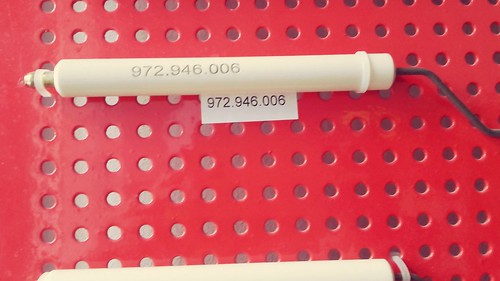ed diffusion-based translocation. Materials and Methods Fly Stocks All fly stocks were raised in the dark at 25uC and were fed standard fly food consisting of cornmeal, yeast, molasses and agar, unless otherwise noted. cn bw and w1118 lines were used as wildtype. Transgenic inaD1 null line expressing inaD under the control of the heat-shock promoter were generated previously, described in. The shibirets1 mutant line was obtained from the Bloomington Drosophila Stock Center. Light-Exposure of Flies For light-exposure, dark-raised flies less than one week old were placed in vials containing standard fly food, unless otherwise noted, and covered with clear plastic wrap. Holes were punctured in plastic wrap using forceps to provide adequate ventilation. Flies were placed 15 cm from a white light source for given times. Light intensity  was measured by an EXTECH 403125 digital lightmeter. All experiments were conducted at room temperature. Light intensities used for inducing stage-1 and stage-2 TRPL translocation were,2297 and,244 lux, respectively, unless otherwise noted. Light intensities are within a physiological range; as a reference, room light is,5001000 lux, a sunny day in the shade is,4500 lux, and a sunny day in direct sun is,546103 lux. Cryosectioning and Immunostaining 548-19-6 biological activity Retinal Sections After illumination, fly heads were skewered onto stainless steel minutien pins and fixed in 3% paraformaldehyde and 5 mM ethylenediaminetetraacetic acid in phosphate buffered saline, washed with PBS, and infiltrated with 2.3 M sucrose in PBS overnight at 4uC. Darkraised flies were fixed under a dim red light before sectioning. Heads were bisected, eyes oriented to face upward on an ultramicrotomy pin, and frozen in liquid nitrogen. 11.5 mm thick sections were cut from retinas using a Leica Ultracut with EM FCS cryo unit at 281uC. Sections were blocked, then incubated with primary antibody overnight at 4uC. Slides were washed with 0.1% sapponin in PBS. An FITC or rhodamine-conjugated secondary antibody “ 21526763 diluted 1:200 in blocking solution was used for 1 hour at room February 2012 | Volume 7 | Issue 2 | e31622 Mechanisms of TRPL Channel Translocation temperature in the dark. Slides were washed again and mounted with 90% glycerol, 10% 1 M Tris and 0.1% pphenylenediamine. Images were taken with an Olympus MagnaFire 2.0 camera S99806, and processed in Adobe Photoshop for illustration. ATP Depletion and Quantification Dark-raised wild-type eyes were incubated in bath solution without sucrose and trehalose, supplemented with 10 mM potassium cyanide and 5 mM 2-deoxy-D-glucose for 60 minutes, in the dark at room temperature and placed on the nutating mixer. Eyes were fixed, rinsed and infiltrated with sucrose. To measure the ATP concentration in the eyes, 6 eyes were homogenized in 50 ml of deionized water and the ATP content of the homogenized sample was determined using an ATP Determination Kit according to the provided protocol. Quantification of TRPL Signal in Retinal Sections Rhabdomeric TRPL signal was measured and quantitated from images of 1 mm “ 24786787 thick retinal sections immunostained for TRPL. Using ImageJ, TRPL fluorescent signal within each rhabdomere was quantified by measuring the total signal within a circle of fixed diameter placed on each rhabdomere using a corresponding phasecontrast image. Five ommatidia were selected from each tissue section, and signal from three rhabdomeres in each ommatidium were measured. Three similar measurements were take
was measured by an EXTECH 403125 digital lightmeter. All experiments were conducted at room temperature. Light intensities used for inducing stage-1 and stage-2 TRPL translocation were,2297 and,244 lux, respectively, unless otherwise noted. Light intensities are within a physiological range; as a reference, room light is,5001000 lux, a sunny day in the shade is,4500 lux, and a sunny day in direct sun is,546103 lux. Cryosectioning and Immunostaining 548-19-6 biological activity Retinal Sections After illumination, fly heads were skewered onto stainless steel minutien pins and fixed in 3% paraformaldehyde and 5 mM ethylenediaminetetraacetic acid in phosphate buffered saline, washed with PBS, and infiltrated with 2.3 M sucrose in PBS overnight at 4uC. Darkraised flies were fixed under a dim red light before sectioning. Heads were bisected, eyes oriented to face upward on an ultramicrotomy pin, and frozen in liquid nitrogen. 11.5 mm thick sections were cut from retinas using a Leica Ultracut with EM FCS cryo unit at 281uC. Sections were blocked, then incubated with primary antibody overnight at 4uC. Slides were washed with 0.1% sapponin in PBS. An FITC or rhodamine-conjugated secondary antibody “ 21526763 diluted 1:200 in blocking solution was used for 1 hour at room February 2012 | Volume 7 | Issue 2 | e31622 Mechanisms of TRPL Channel Translocation temperature in the dark. Slides were washed again and mounted with 90% glycerol, 10% 1 M Tris and 0.1% pphenylenediamine. Images were taken with an Olympus MagnaFire 2.0 camera S99806, and processed in Adobe Photoshop for illustration. ATP Depletion and Quantification Dark-raised wild-type eyes were incubated in bath solution without sucrose and trehalose, supplemented with 10 mM potassium cyanide and 5 mM 2-deoxy-D-glucose for 60 minutes, in the dark at room temperature and placed on the nutating mixer. Eyes were fixed, rinsed and infiltrated with sucrose. To measure the ATP concentration in the eyes, 6 eyes were homogenized in 50 ml of deionized water and the ATP content of the homogenized sample was determined using an ATP Determination Kit according to the provided protocol. Quantification of TRPL Signal in Retinal Sections Rhabdomeric TRPL signal was measured and quantitated from images of 1 mm “ 24786787 thick retinal sections immunostained for TRPL. Using ImageJ, TRPL fluorescent signal within each rhabdomere was quantified by measuring the total signal within a circle of fixed diameter placed on each rhabdomere using a corresponding phasecontrast image. Five ommatidia were selected from each tissue section, and signal from three rhabdomeres in each ommatidium were measured. Three similar measurements were take
Posted inUncategorized
